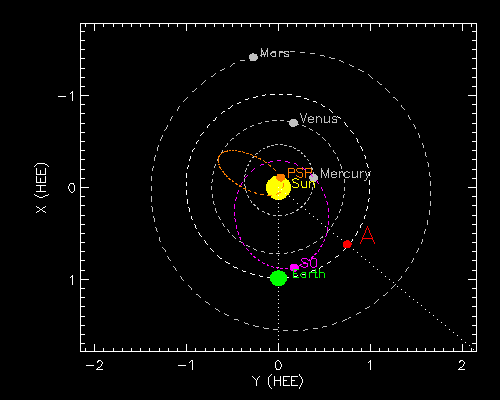Lovejoy is a logical guess, but it is not in the Stereo A APOD Field of View at all. Even in the earlier top-view diagrams Lovejoy is the leftmost object relative to ISON, Mercury, Encke and Earth.neufer wrote:Comet Lovejoyastrocrazythings wrote:
What is the object, almost directly above the last digit (the # 1) in the time - moving slower than the background stars but moving in the same direction as the Comets, in the direction of the Sun?: http://asterisk.apod.com/viewtopic.php? ... 97#p214454
The object in question is fairly bright amongst the stars (limiting magnitude ≈ +11), and assuming it was real, I thought I'd look for just what object it was. Interestingly, I found no asteroid or comet candidate from a total minor planet database collection of about 12,000 objects (234 comets, 10,265 NEAs, and 1426 PHAs).
In the first image, I show the position of the object in question, asteroid 2007 TC66 which is the closest possibility (but has an apparent magnitude of ~+21), and 6063 Jason (1984KB) which is the brightest asteroid candidate in the field (~+17.7). The position differences from the unknown object are significant as well as their apparent brightnesses.
In the overlay image an arrow points to the unknown object which can be seen moving wrt the stars in the APOD video.
What is this object?
It is bright enough that, if it's real, I'd expect it to be in the data base(s) - unless it is a new object



